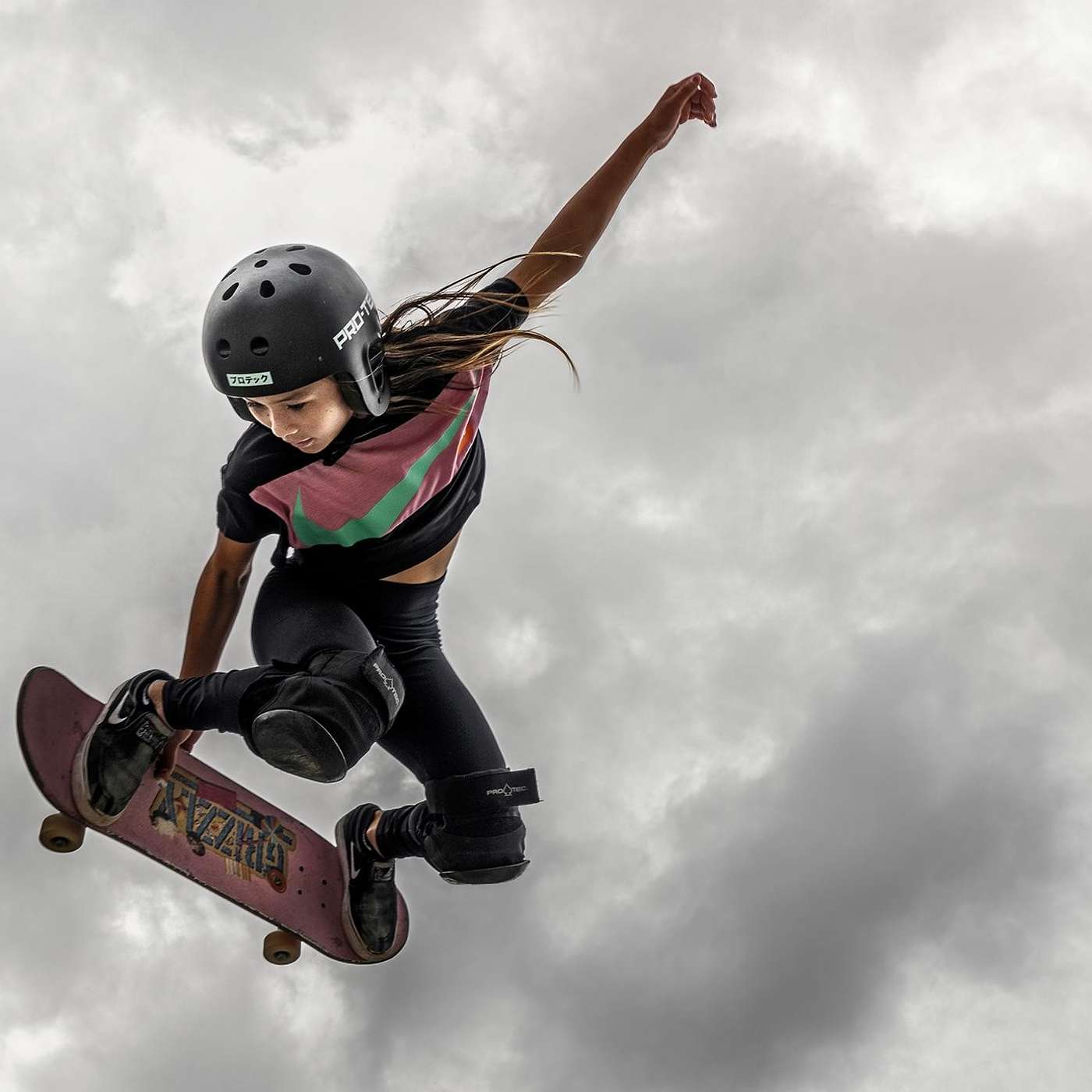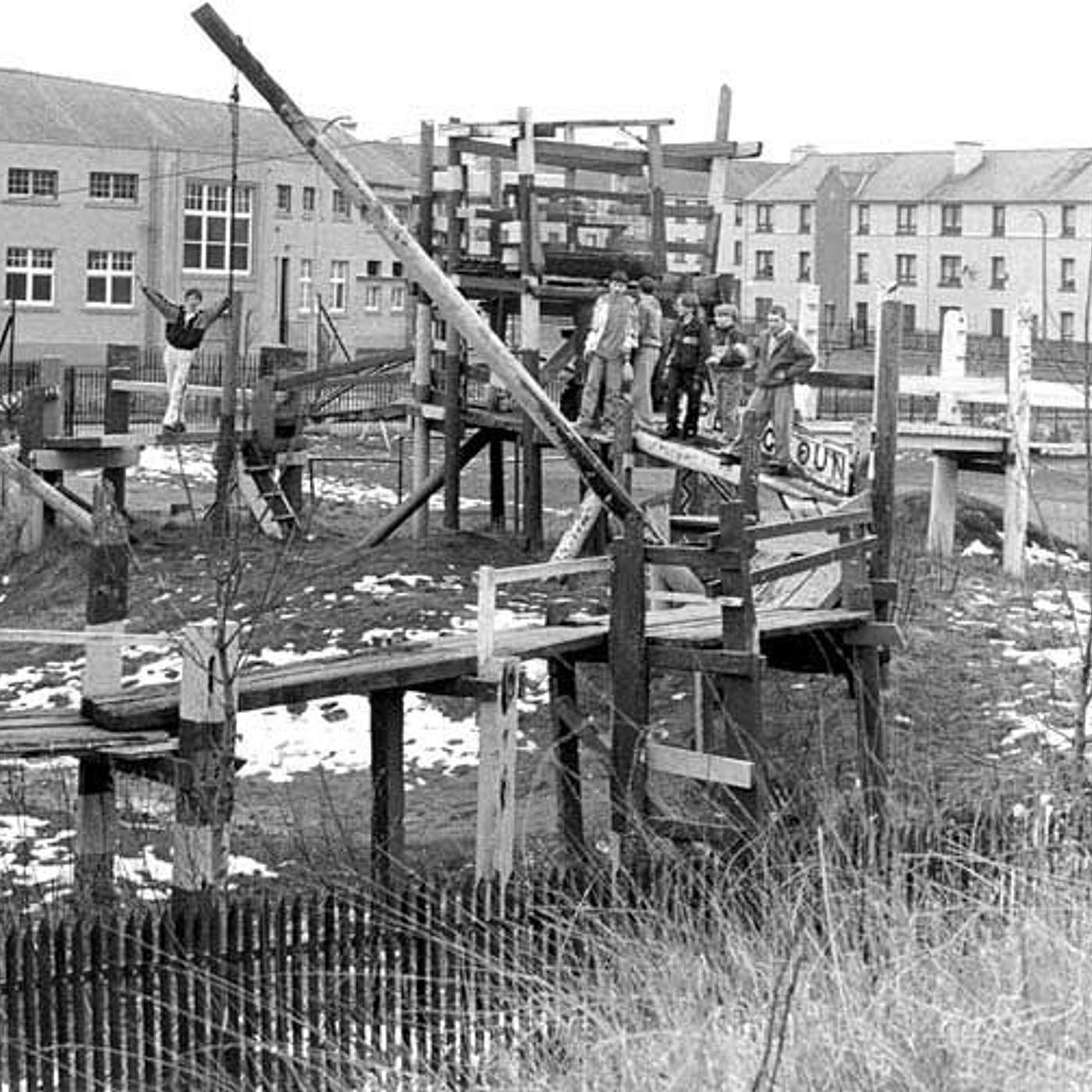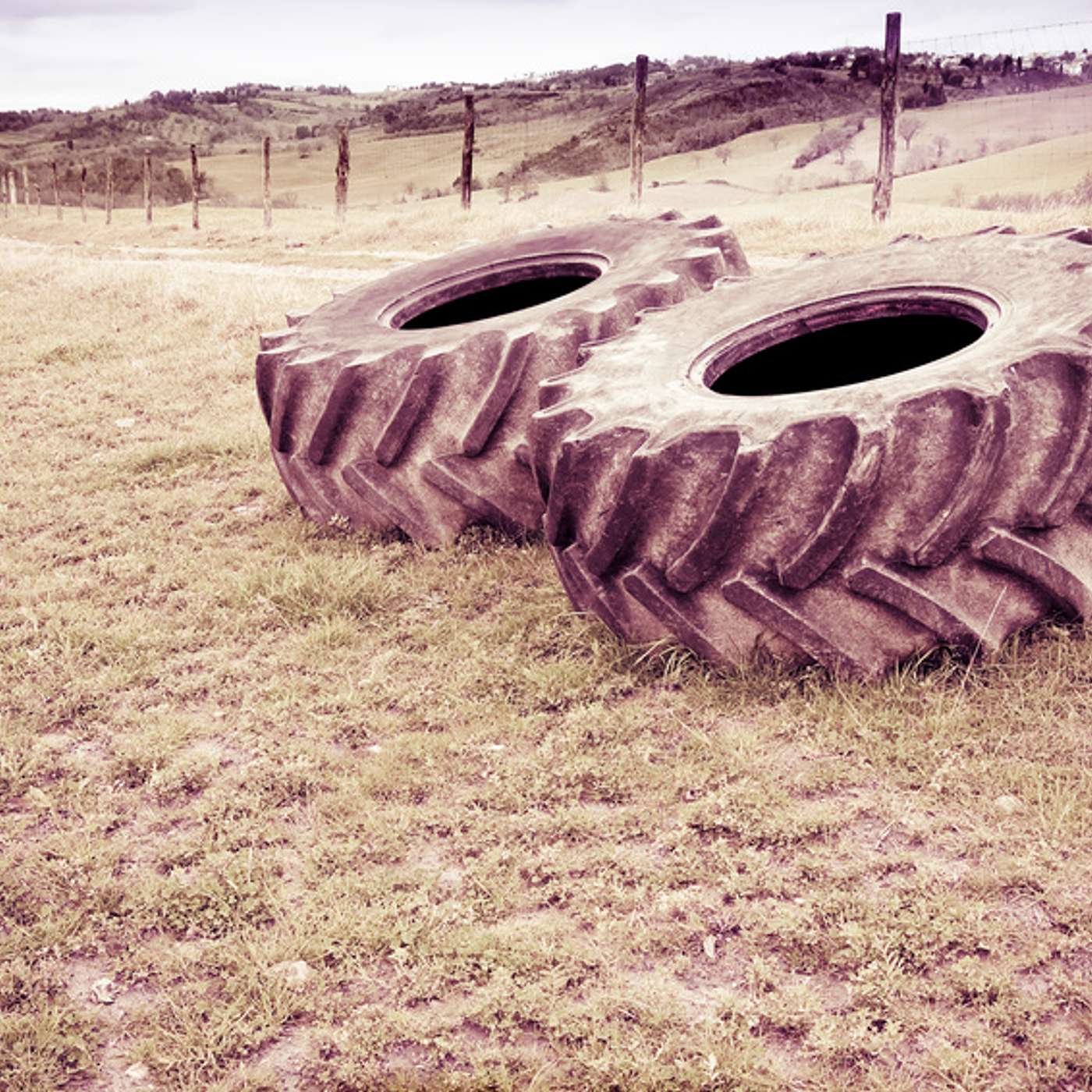Not By Chance Podcast
Introduce Danger Into Their Play
In Psychologist Jordan Peterson's bestselling book, “12 Rules for Life” one rule is, “Don’t bother children when they are skateboarding.” In this episode Dr. Tim Thayne talks about the importance of introducing risk in children's play. There are numerous benefits for children when they aren’t put in bubble wrap, but allowed to grow physically and mentally healthier, more confident and better able to assess risk moving forward. He talks about the adventure playground movement that started in Europe and spread to America. Surprisingly, these playgrounds weren’t only used more, they also logged less injuries.
https://homewardbound.com/
Jordan Peterson - Do Not Bother Skateboarding Children!
https://www.youtube.com/watch?v=lztEnBFN5zU
In Psychologist Jordan Peterson's bestselling book, “12 Rules for Life” one rule is, “Don’t bother children when they are skateboarding.” In this episode Dr. Tim Thayne talks about the importance of introducing risk in children's play. There are numerous benefits for children when they aren’t put in bubble wrap, but allowed to grow physically and mentally healthier, more confident and better able to assess risk moving forward. He talks about the adventure playground movement that started in Europe and spread to America. Surprisingly, these playgrounds weren’t only used more, they also logged less injuries.
https://homewardbound.com/
Jordan Peterson - Do Not Bother Skateboarding Children!
https://www.youtube.com/watch?v=lztEnBFN5zU
While they're confronting these dangerous situations, which by the way are good for kids, it's good to have a little danger in your life, because it makes you, it makes you kind of stretch and use even more of your skills and your agility and your abilities and your thinking. It's to restrain ourselves, and not get in the way of this healthy experience that's actually going on. But conversely, to what we might think it actually leads to probably safer lives because they've learned how to detect risk in their life. There are as many ways to parent as there are parents in this world. But there is one way to parent that wins every time. And that's doing it intentionally. This show is about helping things go right before they can go wrong. Each episode is chosen to help parents like you, who may be overwhelmed or uninspired, find the ideas and motivation to give their best efforts to the people and place that matters the most. I'm Dr. Tim, Thayne, author of the book and host of the podcast, not by chance, I believe that a family success and happiness is not by chance. So welcome to the podcast built especially for intentional families. Let's jump in. I want you to imagine that you're at a city park, and you're observing some kids at the skate park next next to you where you're sitting. And they're doing all this risky stuff. They're riding their skateboard. They're trying to do these flip kicks. They're trying to ride the rail on their, on their skateboard, a 20 foot and of course, if they fall, it's potential that they could break a leg, they're certainly going to skin a knee. And what do you feel if you're my age? Well, you feel every time they fall, this jars you physically. And then on the other part of you, you're you're feeling protective, like you want to protect those kids from this risky behavior, you might even be inclined to walk over and say, Hey, guys, it's cool what you're doing, but maybe maybe don't jump so far don't don't take such big risks. And unless you break your leg or your arm. This is where Jordan Peterson's 12 rules for life come in to play. As far as a parent, one of his rules is don't bother children skateboarding. His whole point there is that while they're confronting these dangerous situations, which by the way, are good for kids, it's good to have a little danger in your life. Because it makes you it makes you kind of stretch and use even more of your skills and your agility and your abilities and your thinking it's to restrain ourselves, and not get in the way of this healthy experience that's actually going on that, conversely, to what we might think it actually leads to probably safer lives, because they've learned how to detect risk in their life. It also has a lot to do with the building up of confidence in a young person's life, where they can do hard things they have stories to tell. Well, I I'm the lucky recipient of really a background, a life that was was built around that whole idea. I mean, I think my family culture, the farm culture, I came from the rural nature of it all, just lend lent itself to constantly exploring, and in many cases doing things I look back on and go, that was kind of dangerous. And yet, boy, they are fun stories to tell. And I'll tell you one of those little later on. But before I do that, I want to I want to take this. I want to share something with you, as I was doing some research on this topic. I came across the idea of adventure playgrounds, originally. So idea of adventure playgrounds was developed by a guy named Erickson in Denmark, who is a landscape architect commissioned to create places for children to play. Well, he noticed that he was having a hard time I think getting children to play in normal playgrounds, but they were going off into you know, this is around the world war and there were bombed out buildings and you know, places where they could go in and construction sites where these kids would be able to be kind of free to build whatever structure they want to dig holes, build structures, pound nails. Well, they decided that that was that was a concept they wanted to use in a playground. This idea was picked up by a woman named Marjorie Allen in Britain. And she really kind of spread it throughout the world. And so there are lots of places and cities where they've taken this concept of instead of creating a plague round that is built around the idea of letting kids play but be ultra safe about it. Our idea was to create situations that had some danger involved where they could assess the situation create something of their own, confront a little bit of danger, and and thus grow from that experience. As I read about this concept, I had dozens of little experiences of my own come to mind. And the most unorthodox playgrounds, you can imagine, were created by me and my brothers and my cousins. One of the things they do in these playgrounds, so they put tires in them, just random tires and piles of them. And, and you can imagine what kids think of when they see a tire, what they might do with that it's it's not attached to the ground, you can roll it, you might be able to throw it off the top of something, I mean, let your imagination go, right? Well, we we had that situation, in one of the areas where we lived, we had all this rural ground around us. And my dad was into heavy equipment construction. And laying around the house was a very large back tire of a backhoe, it was large enough to get two kids facing each other inside the tire. Now, not too far from our home, probably about 500 yards away, was a huge drop off into a river bottom. So it was probably a couple 100 feet from the top of this plateau to the bottom where this river ran through it. And so it was quite a mountain, you know, really right there. So we had the bright idea of taking this tire cross that sagebrush flat to the edge, finding a good place, getting in the tire, a couple of us, and the third one would push it over the edge. Now definitely a dangerous thing I remember, I remembers we struggled to get this tire through all that sagebrush, and it's big. We're just little kids, and we're trying to push this thing through. But it took all three of us to get it to the edge. And I remember the thrill of in the fear of saying, Okay, we got to pick the right spot to roll this thing down. And, you know, we got to brace ourselves, if this does hit something, if it jumps off a steep edge, you know, we'll be rolling. But but you know, we're going to be okay, we actually stamped stuff, this tire full of pillows, because we wanted some cushion in all of this. And then we'd brace ourselves across from each other in the tire, my brother, and I got in and our oldest brother, he was the one that was going to push us off the edge. And we did. And I'll tell you what a crazy, crazy experience that was. But we ended up way down the hill, hit a tree bounced off of it. And you know, honestly a little bit dazed and confused at the end of that, but it was so exciting. Well, then we had to take the tire back up the mountain, imagine trying to carry this big thing and push and drag and get it back to the top. So you could try it again. This time, we picked it a little gentler slope than we did the first time. And and it was able to do it again. Anyway, I just had dozens of little stories come to me of things that I did that were somewhat daring and dangerous. But I know that they built me personally, they gave me confidence. Like I can do tough things, I can do scary things. I don't think it ever got me to feel good about snakes, but but I really did, gained from that whole experience. Now, you would think that I would have this one, this particular rule for life that Jordan Peterson gives us you'd think I'd have this down pat given where I came from, but overlain all of that experience is the culture that we live in, which is all about safety first and protecting and making sure that we don't have high risk behaviors and, and things like that. And so I've gotten caught up in that too. And I would say that as I look back and think about my own child, childhood, the way I was raised, what I gained from those experiences that freedom to do those things, versus how I raised my kids, I'm, uh, I feel a little bit guilty. Now, I did try to create situations where they learned to work hard, where they would, you know, be exposed to, to, you know, construction and building things and so on. But I've more often than I'd like to admit at this point I have, I've let my nervousness and my fear of their safety get in the way of probably some really positive risks that they could have taken My My son right now has been asking if he can just take some Ghostess friends and go go camping. And I've been worried about, okay, he's going to drive aways, and they're going to be safe when they're driving and, and all that, and some of that needs to be taken into account. But after studying this, I told him just today I said, By the way, yes, you can go camping, you can go do this. I, I do think it's going to adjust the way I think I want to give him those experiences that maybe his older brothers had a little more of, so that he can develop those experiences and those so he can develop the confidence that comes with confronting a little bit of risk and danger, and, and succeeding, winning. In the end. Here's my challenge to you parents, I want you to think about the ways that you might be bubble wrapping your child and their experiences, maybe overly doing it, and find ways to say yes, a little bit more often to maybe some things that you think initially are dangerous, maybe there's some ways that you can manage the risk and let them do something a little bit more dangerous. You call that controlled risk, right? Where you're allowing it to happen, but it's in a little bit more controlled environment. If you think about it in the world that we're in, that I work in, where teens are in, in some cases, they might be sent into the wilderness, to get therapy in a unique and very unique environment. While they're there, they're completely out of their comfort zone. In most cases, they don't have a lot of skills to, to that match the needs for the wilderness and what they have. And so they have a lot of growing they have to do. And if you think about it, it probably feels fairly dangerous to them first, like having to build their own fire, they're literally playing with fire out there. And they have to learn to be safe. Like, in the program that we created, they built their own backpacks and, and had a knife in their hand and had had to use a hatchet and different things like that in order to build this, this tool that they needed to to hike with. They're surviving the wilderness, they're learning how to deal with cold temperatures, they're making sure that they stay warm enough in the wintertime. There's all of these these potential dangers out there. And they're navigating through that with the help of the field staff, of course. But that's an example of controlled risk. And there are many things we can do as parents to give our kids some of these controlled risk opportunities. And so I'd encourage you to look at your life, your culture and see how you can add to those in positive ways. And at the end here, I want to just encourage you to go to our website, we've got a brand new website at Homeward Bound it's homeward bound.com. And I'd love you to take a look at that look at our team. Look at some of the testimonials parents have written up there. And and stories about the work that we do. I really want to encourage that we are entering into the month of our birth at Homeward Bound 17 years now at homeward bound. We've been able to work with with many hundreds of families over that time. We feel incredibly grateful for the families who have allowed us to come into their homes, work with their family, sometimes preventing the need for an out of home placement, many times post treatment, helping them reintegrate together again, to to help them design their future together as they come out of treatment. So thanks for joining me today. And I wish you all the best as you think about allowing a little more danger a little more risk to happen in positive ways inside your family. Parents, your time is valuable and I'm grateful you spent some of it with us. What you're intentionally doing in your home life was inspiring and unmatched in its importance in long term effects. Ask yourself, What am I going to do because of what I've learned today?



